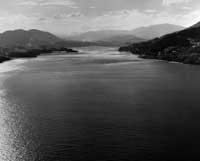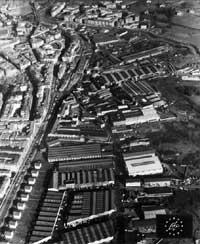Urdaibai, pioneer in minimization

Urdaibai is located at the mouth of the Oka River, between Gernika and Mundaka. Its ecological value is undeniable and this was recognized by UNESCO in 1984, when it declared it a Biosphere Reserve. Since we talk about the value of the region of Urdaibai, in addition to ecological, we must highlight the economic. Economic activities based in Gernika and its surroundings represent the majority of sectors, with wood and metal being the strongest. Both factors, ecological values and economic relevance, are decisive for the region. Undoubtedly, the future of the inhabitants of Urdaibai is based on achieving a balance between the two, mistakenly.
Pioneer in the Biosphere Reserve and Minimization
As mentioned above, UNESCO adopted its decision in 1984. It was the result of years of work in which environmental and neighborhood associations have acted more strongly than anywhere else. Since its declaration as a Biosphere Reserve, the existing legal vacuum in Urdaibai has been more evident. In 1989 the Basque Government passed the Urdaibai Ordination and Protection Law and created instruments for citizen participation.
From an environmental point of view, Urdaibai is an ideal place for research. The ecological value of the region contributes to reducing the impact of industrial activity and consolidating a sustainable development model. Say and do.

In 1992, under the direction of the IHOBE Public Society, the Environmental Audits were organized in the main companies of Gernikaldea. Thanks to them a thorough knowledge of the production process of the companies was achieved. The waste generated in each process was classified according to the Special Waste Management Plan and collected data of interest on the work of the company.
The XUME Technical Office has led the next steps. The second phase of the Plan has been carried out in 17 companies around Gernika. Production processes have been analyzed and changes have been proposed in collaboration with company technicians. The aim of this is obviously to reduce waste generation by promoting clean technologies. Once the process is analyzed by company, it can be said that the changes made have been more effective than the small ones. In many cases, allocating production to more logical models has been enough to produce less waste.

The Management and Minimization Plan of Industrial Waste of the Southern Region of Urdaibai is located on the threshold of this nature that has been developed in the CAPV. The pioneering plan has also awakened hope at the European level. Therefore, the European Association has also participated in this project through the Life Programme. The head of the Life Program at the Bilbao Congress said that “it serves the Urdaibai Plan to extend the model to many other regions. So that the dream of sustainable development becomes a tangible dream in everyday life.”





